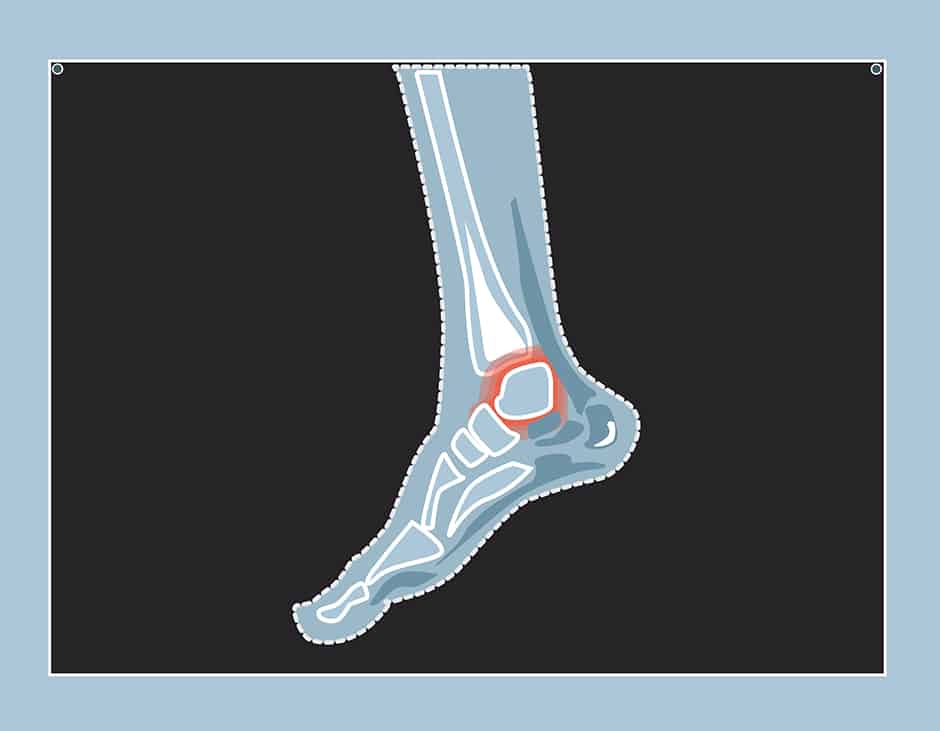Many of us, at one point or another, have experienced a sprained ankle. When we make a quick shift in footing that causes the ankle to roll outward, it causes the outer ankle ligaments to twist and sometimes tear; the result is our “twisted ankle.”
There are three grades of severity to ligament injury, and thankfully the ankle ligaments are much less likely to tear fully, which is why it is so much more common that ankle sprains are minor — in the grade one or two range.
Grade one tears are usually minimal, and they occur when there is slight stretching, swelling, and little damage to the ligament fibres. Someone who experiences this type of sprain may feel discomfort when putting pressure on the foot, but the pain usually eases quickly with light exercise.
Second degree tears are partially torn ligaments and can cause a “looseness” of the ankle joint with certain ranges of motion. This sprain requires immobilization and range of motion exercises. Recovery time typically lasts a few months.
The most severe type of tear, the third degree tear, occurs when the ligament is completely torn. This type of injury occurs less frequently than the other two. The recovery from this kind of injury involves immobilization, physical therapy, and possibly reconstructive surgery.
“I sprained [my ankle] pretty severely playing basketball back in late October,” says Nathan Golish, a fourth-year philosophy student. “I went into ER to get an x-ray and… they gave me a boot and asked me to come back three weeks later to see how it had healed.”
The doctor also instructed Golish to participate in some light exercises, so that he could retain full motion once he started to heal. After this time, he could start physiotherapy.
“I had some slight pain and stiffness in my ankle [and when I began therapy] they would massage my calf and would ultrasound it. The healing really started to progress at this point and the exercises became more rigorous; doing some light jumping,” said Golish.
“By about 2 weeks later I…felt well enough to get back and practice basketball again… I had some stiffness after playing, but I would ice it and stretch it out and it felt even better the next day,” said Golish.
For Shaunesy Dyer, her sprain was minor and her treatment plan was different.
“[I] was walking down the stairs, and I rolled onto my ankle and sprained it. When I went to the doctor, he gave me anti-inflammatory drugs to help with the swelling because when I woke up the next morning, it was the size of a golf ball,” said Dyer.
“The doctor advised me to keep the weight off of my foot and only walk if it was essential… so now I just keep it wrapped up in a tensor bandage.”
Although a sprained ankle may appear to be a minor injury, it is very important to get it checked out by a doctor when you think that you have experienced one.
“I was the typical athlete and didn’t think too much of the injury at first,” says Rachel Pham, member of the Varsity Blues rugby team.
“I did not get treatment right away, the sprain continued to worsen until it became quite swollen. I then saw a therapist who told me to take a week off of sports to rest and then prescribed me some strength and stabilizing exercises,” she explains.
“After the week of rehab and rest, it was much better and I was able to return to play,” says Pham.


